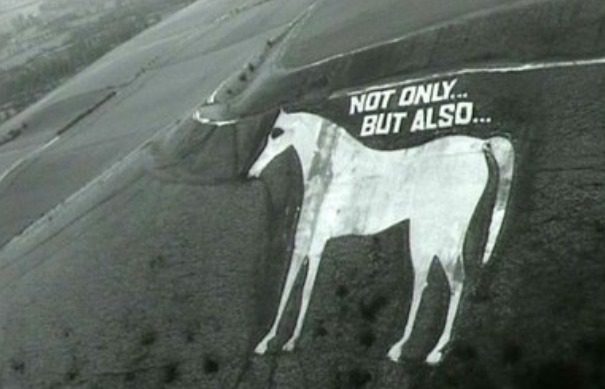Not Only … But Also …

Aside from the phrases we practiced on the previous page, there’s one structure in particular that’s typically seen and heard at advanced levels, and using it on exam day will guarantee you some extra grammar points:
Not only _____ , but also _____ .
This structure is an example of negative inversion and one that’s used to add emphasis, formality or dramatic purpose to your language. The topic of inversion is covered in greater detail in the Writing section of the course, but we’re focusing on this inversive structure here since it’s another useful phrase to use for addition.
As it’s a somewhat formal structure, you’re more likely to see it in written rather than spoken English, although using it accurately in your Speaking exam will certainly make the examiners sit up and take notice. For that reason, it’s highly recommended that you walk into the exam feeling confident about using it.
With that very goal in mind, let’s begin by looking at an example of a simple sentence that uses and to connect two clauses:
Tourism benefits the global economy and it helps local communities.
How can we make this sentence more emphatic, formal and dramatic – and more characteristic of C1 level English? You guessed it – we can use negative inversion. Let’s see how.
The very first thing we do is place not only at the beginning of the sentence. Then we identify the subject of the first clause, which in this case is tourism. As this is an uncountable noun, we need to add an uncountable auxiliary verb in front of it – in this case, does.
Not only does tourism
We now add the rest of the first clause:
Not only does tourism benefits the global economy
Can you spot the grammar mistake? We need to correct this by deleting the s in benefits so that the auxiliary verb (does) and the main verb (benefit) agree. In other words, it needs to look like a question!
(Does tourism benefit the global economy?)
Not only does tourism benefit the global economy
We now need to connect the second clause. We do this by adding a comma and the linker but, followed by the subject from the second clause – it. Let’s now add the linker also.
Not only does tourism benefit the global economy, but it also
To finish, we simply add the rest of the second clause – helps local communities.
Not only does tourism benefit the global economy, but it also helps local communities.
And there we have it – we’ve taken a simple sentence and transformed it into an advanced one using negative inversion. Before we move onto some practice exercises, let’s see what other things you need to be aware of when using this structure.

If our example sentence was slightly different and used the countable noun tourists instead of the uncountable noun tourism, we would need to change the auxiliary verb in the first clause from the singular does to the plural do. We would then need to do the same with the subject in the second clause and change it from it to they:
Tourists benefit the global economy and they help local communities.
Not only do tourists benefit the global economy, but they also help local communities.

How about when we use the verb to be in the second clause instead of an action verb?
Tourism benefits the global economy and it is helpful for local communities.
The important difference in this example is that the verb to be must immediately follow the subject (or contract with it). We cannot separate them. We only separate them when using a regular verb.
Not only does tourism benefit the global economy, but it’s also helpful for local communities.
As well as the small grammar changes we’ve seen in the various forms above, we hope you’ve also been paying attention to the position of commas, as you’ll start to be tested on them from this point on.
These first tasks require you to create your own inverted structures by completing the sentences using the words provided. To really test you, the number of gaps you need to fill will increase as you work your way through the tasks.
For these next 4 tasks, there are no words or commas provided, so let’s see if you can rise to the challenge. Again, as you progress through the tasks, the number of gaps will increase!